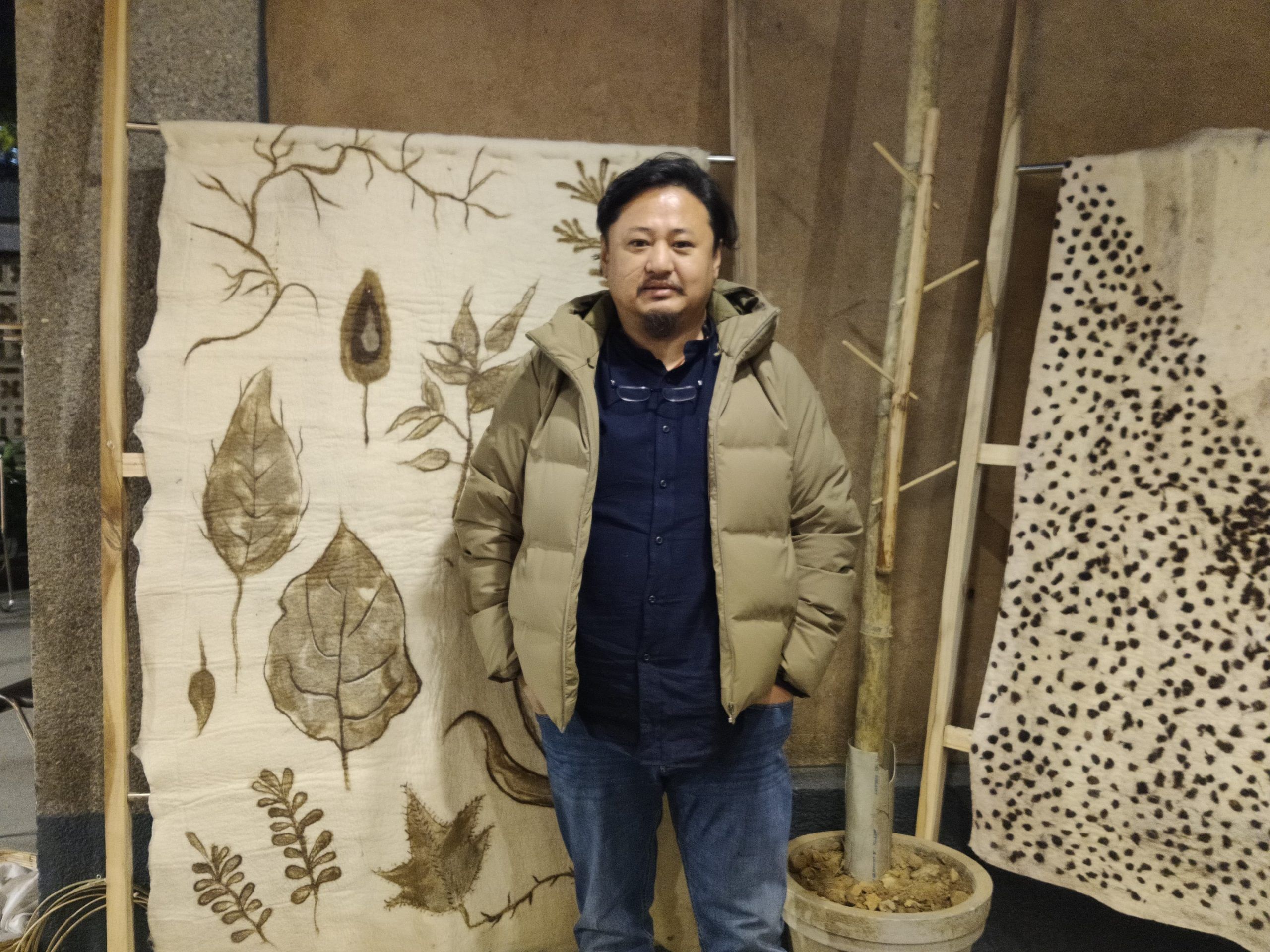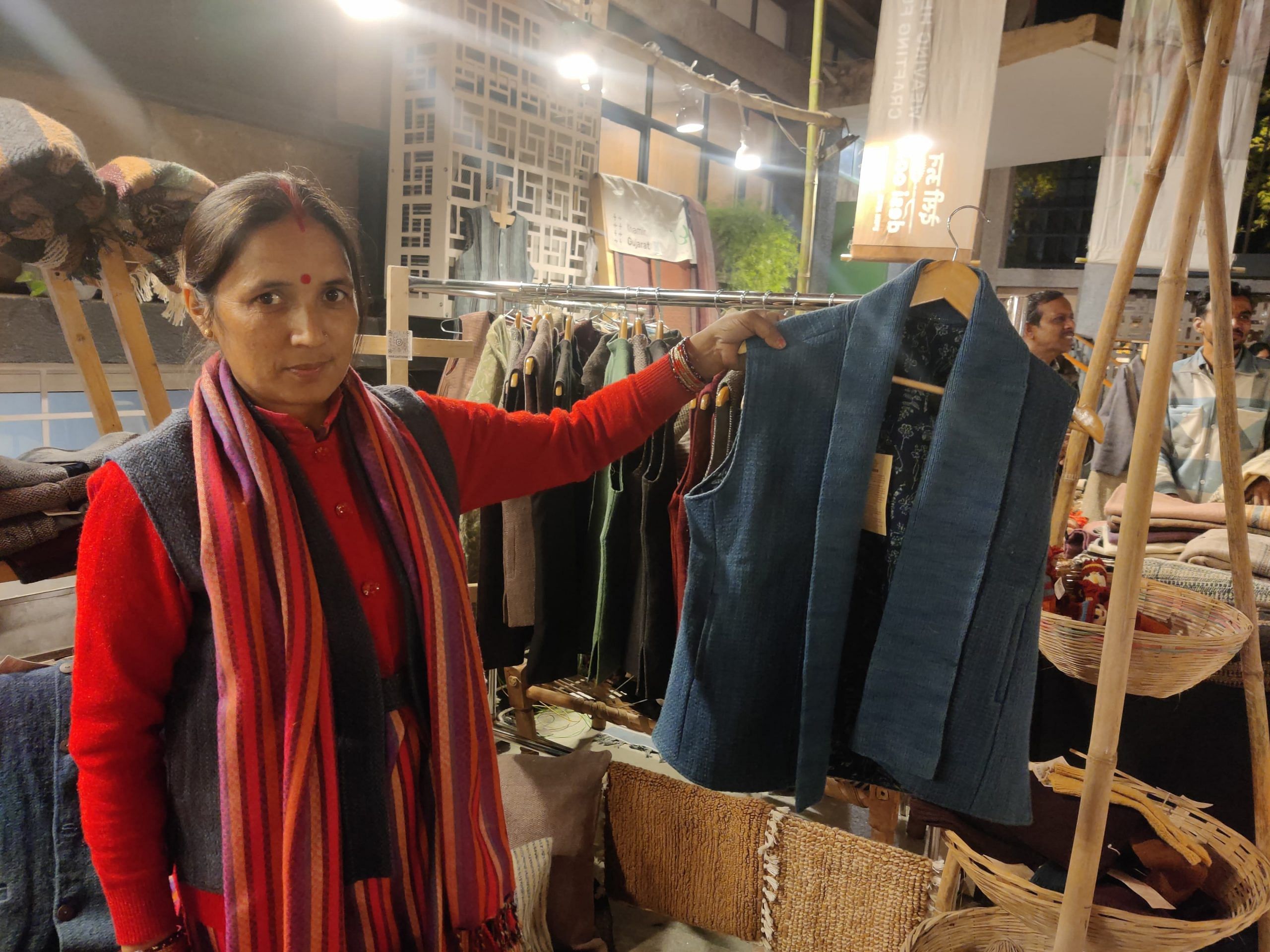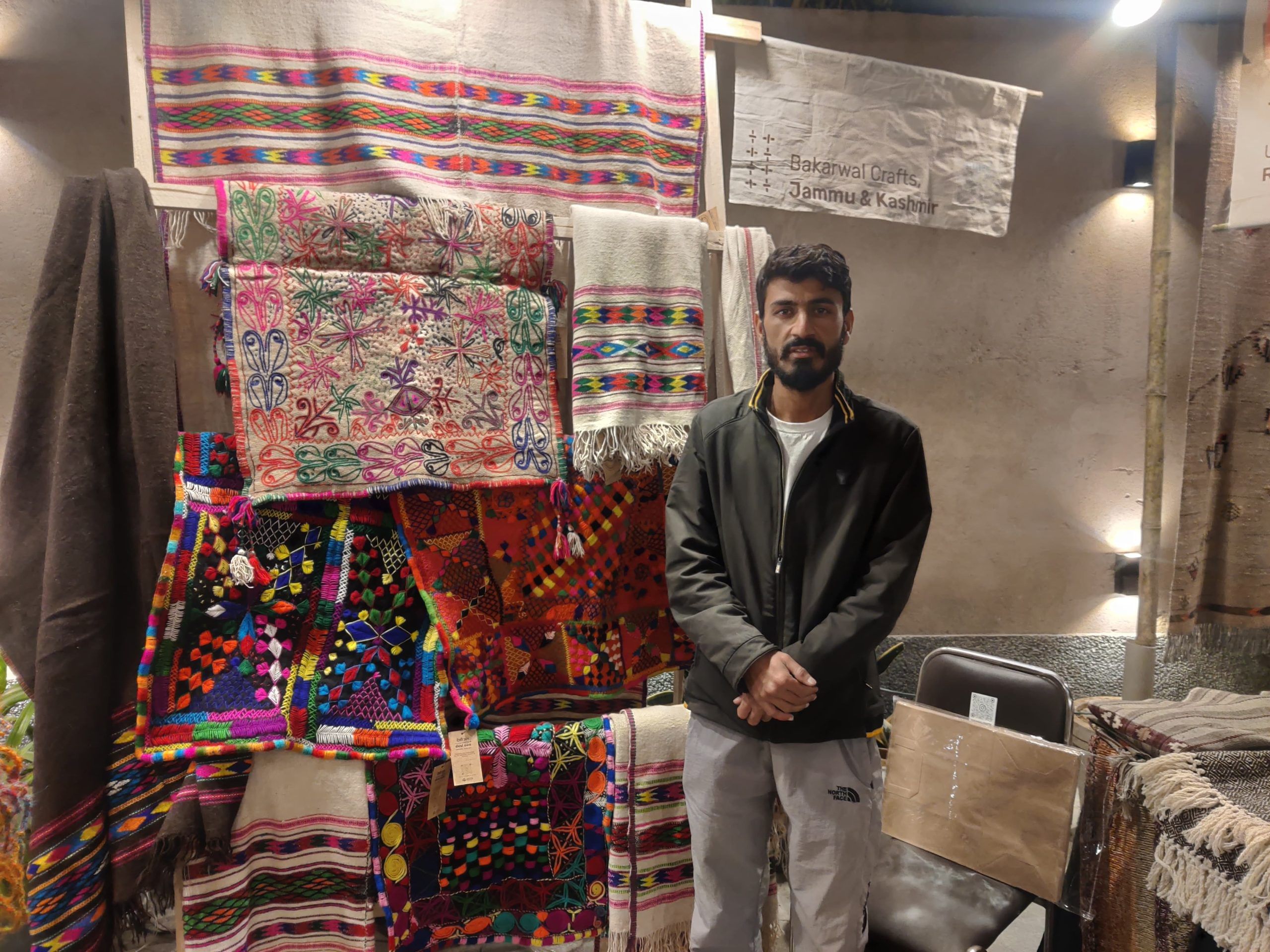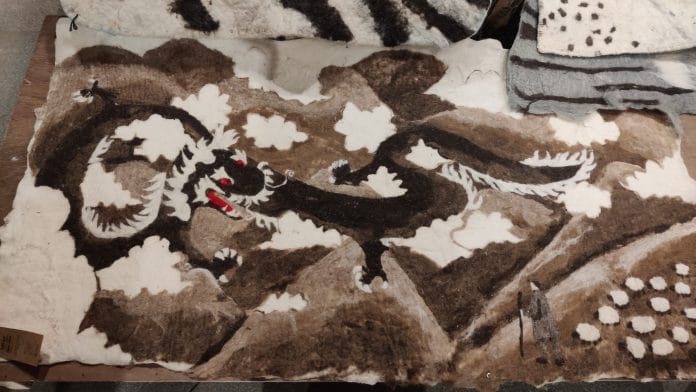New Delhi: In the meadows of Sikkim, stories of dragons, lightning, and thunder are not just folklore; they are woven into the fabric of life. The rug, crafted from the wool of the Banpala sheep, carries the tale of Garang Gurung, a mythical narrative where shepherds and spirits collide in the mountains. Storytelling transcends words, blending tradition and craft to create something tangible, tactile, and timeless.
“Everyone interprets wool differently. For me, it’s about stories and materials. The older narratives are part of identity and don’t need to be ‘improved.’ They are passed down through generations. What excites me is continuity—creating new expressions while respecting tradition,” said Sonam Tashi Gyaltsen, a product designer from Sikkim.
The 2024 Desi Oon Festival, which began on 13 December at Triveni Kala Sangam, celebrates India’s rich wool heritage under the theme “Weaving Heritage, Crafting Futures.” The festival brings together cooperatives and brands from Maharashtra, Gujarat, Uttarakhand, Jammu, Ladakh, and Sikkim, united by the mission to preserve culture, protect tradition, and empower women through sustainable livelihoods. Visitors explore ethically handcrafted wool products, supporting local wool economies and heritage crafts while contributing to a more sustainable future.

The festival is an initiative by the Centre of Pastoralism, an organisation working with pastoral communities, particularly shepherds, to support their livelihoods and preserve traditional practices. The centre also works on projects like mapping pastoral routes and advocating for policies such as the Forest Rights Act, which supports pastoralists’ over land and resources.
“Pastoralists were discarding wool during migration due to low prices, as imports from countries like New Zealand, Israel, and Syria flooded the market. While they earn Rs 18,000 to Rs 30,000 for selling a sheep, the wool is undervalued due to a more efficient foreign supply chain,” said Richa Keshri, wool coordinator at the Centre of Pastoralism. She highlighted how, despite wool being a source of income, financial pressures and the lack of a streamlined local supply chain often force pastoralists to dispose of it.
Empowering women, preserving tradition
At the festival, countless stories unfolded, each echoing traditions from every corner of India. People gathered to connect, sell, and realise that their crafts hold value. One such story is that of Deepa.
In the serene hills of Uttarakhand’s Pithoragarh district, Avani, an organisation focused on sustainable development, has been transforming lives for 25 years. Known for its eco-friendly products, zero waste policy, and promotion of traditional crafts like handloom weaving, Avani also tackles the socio-economic challenges faced by rural communities.
“Before Avani, women in our villages were expected to marry by the age of 16. Now, we earn, we are independent, and society sees us differently,” said Deepa, who joined Avani at 17 and is now the president of the cooperative. “Earlier, women were left behind when men migrated to cities for work. Now…the respect we get, it’s different.”

Deepa oversees the production of handwoven, naturally dyed products made from Harsheel sheep wool, sourced raw from the Himalayas.
“Our creations, ranging from shawls to materials for FabIndia, are sold across India, the US, and Europe. Even pine needles are repurposed into bioenergy. Solar panels power their centres, with excess electricity sold to the state board,” said Deepa.
Reviving Bakarwal Crafts
Faisal Bokda, 24, is on a mission to revive and elevate Bakarwal Crafts, a brand deeply rooted in his heritage. Hailing from the Sambal district of Jammu, Faisal belongs to the Bakarwal community, a nomadic tribe that spends half the year in the mountains and the other half in the plains. The products he represents are made from the wool of Bakarwali sheep and the hair of Bakarwali goats.
“I want to take Bakarwal Crafts to the next level,” said Faisal. “I want to reconnect with our roots, using natural dyes and moving away from synthetic materials like acrylic wool. But to do this, I need more resources. That’s why I am attending festivals that offer free stalls, so I can reach more people without the financial burden.”
Currently, only the women in Faisal’s village create products, such as intricate swings made from goat hair and beautifully embroidered mats. With limited training and resources, these artisans have only scratched the surface of their potential. Faisal dreams of expanding the craft, providing women with better training and empowering them to create a wider range of products. His ultimate goal is to showcase the rich cultural heritage of the Bakarwal community across the Jammu region.

Narratives through wool
LA brand from Sikkim aims to establish creative industries in the region through initiatives like Chubako, which focuses on reviving Sikkim’s indigenous Banpala sheep. Chubako won the Global Eco Artisan Awards in New York in 2021.
“Banpala sheep are nearing extinction. We have about 1,000 to 2,000 sheep left,” said Gyaltsen. His company LA blends aesthetics, tradition, and wool to tell stories of the region.
A beautiful brown-and-white rug tells the story of Garang Gurung, a dragon deity. The mountain, meadow, shepherd, sheep, and dragon are featured on the rug, which narrates how shepherds encounter these deities and spirits when they go into the mountains.
“At the Desi Women Festival, it was the first time some of these women saw a straight road and were unsure if the car was moving. Their second experience was flying, followed by visiting the festival and discovering others like them with diverse wool crafts,” said Gyaltsen.
Gyaltsen’s focus is on introducing new techniques—like moulded jacket without stitching—while staying true to traditional practices.
“We use the natural colours of the sheep—browns, greys, whites, and blacks—without any dye. Blues come from indigo, and some browns from walnuts. It’s all about simplicity and authenticity,” he said.
Before joining cooperatives, many women were financially dependent on their husbands. Despite their skills, they lacked market access and opportunities to turn their craft into a livelihood. For some, attending the Desi Oon Festival marked their first time venturing beyond their villages.
“At the festival, it was the first time some of these women saw a straight road and were unsure if the car was moving. Their second experience was flying, followed by visiting the festival and discovering others like them with diverse wool crafts,” said Gyaltsen.
(Edited by Prashant)






